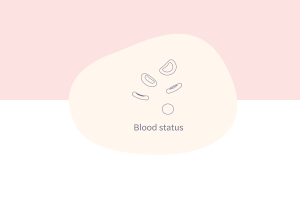Trisomy 13
NIPT
What is Trisomy 13?
Trisomy 13 is also called Patau’s Syndrome. It is a very rare but life-threatening genetic condition, and is caused by the presence of an extra chromosome 13 in the cells of the baby.
Sadly, most babies with Patau’s Syndrome will die before or shortly after being born. Only a small number (about 1 in 10) babies born alive with Patau’s Syndrome will live past their 1st birthday.
Patau’s Syndrome does not usually run in families and is not caused by anything the parents have or have not done.
Why is this analysis important?
A screening test for Patau’s Syndrome can help you make choices about further tests and care or treatment during your pregnancy or after your baby’s born. Currently, all pregnant women are able to have a combined serum screening test which consists of a blood test and an ultrasound scan via the NHS, but this test is less sensitive than the non-invasive prenatal test (NIPT), which means that the ability of the NIPT test to correctly identify the condition is higher. The combined serum screening test has a sensitivity of 80% for Patau’s Syndrome, while the NIPT test is nearly 100% sensitive for this condition.
Results
The results can either show a “low chance” or an “increased chance” of Patau’s Syndrome.
If the result shows “low chance”, this means that it is very unlikely that your baby is affected by Patau’s Syndrome.
If the result shows “increased chance”, then you should discuss with your midwife the need of an invasive diagnostic test, such as chorionic villus sampling (CVS) or amniocentesis, to confirm the results. CVS is usually carried out between the 11th and 14th weeks of pregnancy, while amniocentesis is carried out between the 15th and 20th weeks of pregnancy.
Other Considerations
The NIPT test is a screening test and can only tell you if your baby has an increased chance of Patau’s Syndrome or not, but cannot make a definite diagnosis. It only screens for Trisomy 21, 18 and 13, but not other genetic conditions that can be present at birth. The screening chances have been calculated based on information you have provided via our questionnaires. Any inaccuracies in the information provided could alter the chances of these genetic conditions being present.









